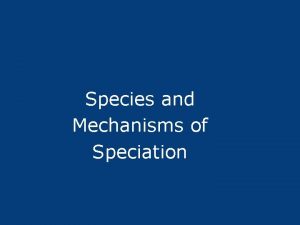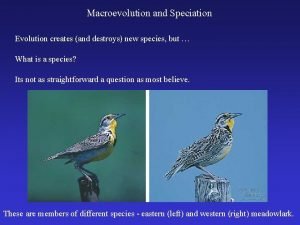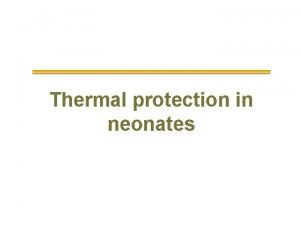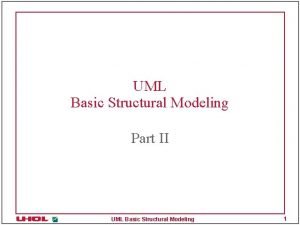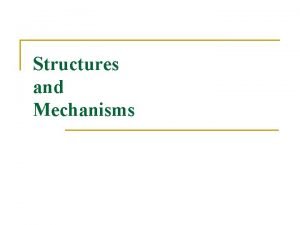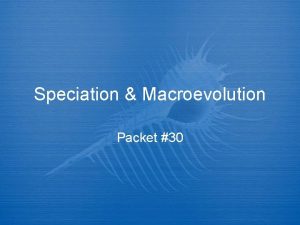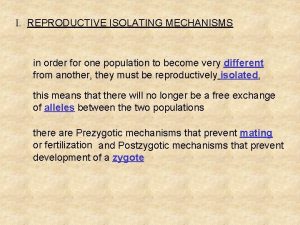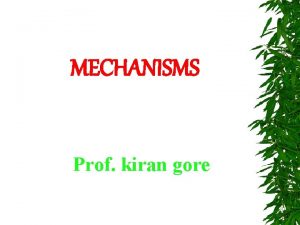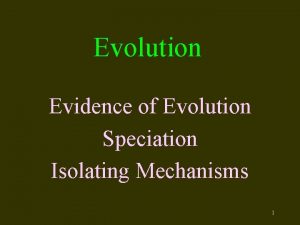Reproductive Isolating Mechanisms Ch 17 Reproductive Isolating Mechanism
















- Slides: 16

Reproductive Isolating Mechanisms Ch. 17

Reproductive Isolating Mechanism: • Biological or behavioral characteristics that reduce or prevent interbreeding with other populations; e. g. , the production of sterile hybrids. Establishment of reproductive isolation is considered essential for development of a new species. • RIMs are the only way new species evolve!

Temporal isolation • Two species whose ranges overlap have different periods of sexual activity (or breeding season) • Rana aurora - breeds January - March • Rana boylii - breeds late March - May

Temporal isolation • Another example: • Drosophila persimilis - breeds in early morning • Drosophila pseudoobscura - breeds in the afternoon

Behavioral isolation • In species with courtship rituals (breeding calls, mating dances, etc. ), there is usually a complex, give-and-take "ritual" before actual mating takes place. • This prevents "wasted effort" with a partner who will not produce fertile offspring with you! (Hopefully this never happens to you!)

Behavioral isolation • mechanical isolation - morphological differences prevent mating/pollination. • gametic isolation - sperm and ova are chemically incompatible, and will not fuse to form a zygote. • Examples: Crickets, birds of paradise , Blue Footed Boobies from the GI, red-capped manakin, etc.

Geographic isolation • Inability of organisms to mate because they exist in separate places. • Example: Spotted owl subspecies living in different geographic locations show some genetic and morphological differences. This observation is consistent with the idea that new species form through geographic isolation.

Allopatric and Sympatric Speciation • Allopatric: a physical barrier divides one population into two or more populations. – After a long period of time, the two organisms will no longer be able to successfully breed. – Barriers include: mountains, wide rivers, lava flows, etc. • Sympatric: a species evolves into a new species without a physical barrier. – Common in plant, maggots (as they eat different food)

Reproductive isolation • Two populations no longer interbreed. • This can happen at any time. • The species then evolve into two separate species.

Speciation • Let’s first define a species: A species is often defined as a group of individuals that actually or potentially interbreed in nature. In this sense, a species is the biggest gene pool possible under natural conditions. • For example, these happy face spiders look different, but since they can interbreed, they are considered the same species: Theridion grallator.

Speciation • Let’s define speciation: Speciation is a lineagesplitting event that produces two or more separate species. • Look at a fruit fly tree to see what speciation looks like.

Speciation • How does it happen? • The scene: a population of wild fruit flies minding its own business on several bunches of rotting bananas, cheerfully laying their eggs in the mushy fruit. . .

Speciation • Disaster strikes: A hurricane washes the bananas and the immature fruit flies they contain out to sea. The banana bunch eventually washes up on an island off the coast of the mainland. The fruit flies mature and emerge from their slimy nursery onto the lonely island. The two portions of the population, mainland island, are now too far apart for gene flow to unite them. At this point, speciation has not occurred—any fruit flies that got back to the mainland could mate and produce healthy offspring with the mainland flies.

Speciation • The populations diverge: Ecological conditions are slightly different on the island, and the island population evolves under different selective pressures and experiences different random events than the mainland population does. Morphology, food preferences, and courtship displays change over the course of many generations of natural selection.

Speciation • So we meet again: When another storm reintroduces the island flies to the mainland, they will not readily mate with the mainland flies since they’ve evolved different courtship behaviors. The few that do mate with the mainland flies, produce inviable eggs because of other genetic differences between the two populations. The lineage has split now that genes cannot flow between the populations.

Work • Compare and contrast genetic drift and natural selection. Must be at least 4 sentences. • What are prezygotic and post zygotic reproductive isolating mechanisms? • What is allopatic and sympatric speciation?
 Sympatry
Sympatry Antelope squirrel allopatric speciation
Antelope squirrel allopatric speciation File protection mechanisms
File protection mechanisms Levers and linkages
Levers and linkages Evaporation heat loss newborn
Evaporation heat loss newborn E-commerce mechanisms definition
E-commerce mechanisms definition Undoing defense mechanism examples
Undoing defense mechanism examples Stopped flow
Stopped flow Mutation graphic organizer
Mutation graphic organizer The art of writing reasonable organic reaction mechanisms
The art of writing reasonable organic reaction mechanisms Weighing mechanisms in public forum debate
Weighing mechanisms in public forum debate Uml
Uml Strengthening mechanisms
Strengthening mechanisms The real reason dinosaurs became extinct
The real reason dinosaurs became extinct Structures and mechanisms
Structures and mechanisms E commerce mechanism
E commerce mechanism Compliant mechanism
Compliant mechanism
